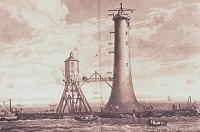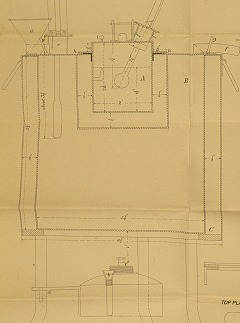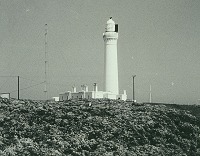Back to start | Back to Weather: Fog | Seeing what's around
Lighthouses on the Scottish East Coast

There are many lighthouses on the Scottish coast. They were built on the most dangerous parts of the coast and on rocky outcrops to warn vessels of these hazards. They made the coastline safer for Scottish vessels, many of which were fishing boats. Lighthouses also helped guide boats into a safe harbour.
Lighthouses were fitted with a powerful light beam. The light intensity was concentrated many times by mirrors or lenses. Each light had a different signal so that seamen would know where they were. As technology improved, the lights became more intense and reliable. A horn could also be sounded when the light could not penetrate the mist.
The very first lighthouse, a coal-fired light, was erected on the Isle of May in the Firth of Forth in 1636. The Northern Lighthouse Board was established in 1786. It was set up in response to many complaints about the dangers of the Scottish Coast. It was responsible for building and maintaining all the lighthouses and harbour lights around the coast of Scotland. The first lighthouse built by the Board was at Kinnaird Head, Fraserburgh.
The Board employed engineers to design and build lighthouses. The Stevenson family were responsible for many of these Scottish lighthouses. Robert Stevenson was the founder of this family of engineers. He was the engineer of some of the best-known lighthouses, including the Bell Rock Lighthouse off Arbroath. He was also the designer of many harbour improvements.
The Bell Rock is a sandstone reef 11 miles south of Arbroath. At low tide it is exposed but at high tide it is under seven feet of water. It was popular with the Arbroath fishermen as the surrounding area was an excellent fishing ground. Before the building of the lighthouse, about six ships were wrecked here every year. The Bell Rock lighthouse was built by in 1811 by Robert Stevenson. Building lighthouses is not easy as they are usually situated in places that are very difficult to reach. This was the case at the Bell Rock where the work was both difficult and dangerous. It is 115 feet (about 35 metres) high with a base diameter of 42 feet (about 13 metres).

Another hazardous area was the stretch of the north east coast around Boddam. Many were concerned about the number of boats lost here. In 1819 and 1822, ship owners, merchants and fishermen presented petitions to the Commissioners of the Northern Lighthouses. In 1829 the Buchanness Lighthouse was completed.
Today, lighthouses are operated by advanced technology. However they have always been complex. The lamp of the lighthouse was an expensive and precise piece of equipment.
It required delicate handling and regular maintenance. There was much discussion about the harbour lights at Banff for example. It was claimed that they were inefficient. The Stevenson Brothers drew up instructions for maintenance of the Banff light in 1863. The glass lenses or prisms were to be cleaned daily, first dusted with a feather or soft brush and then polished with a chamois skin.

Covesea Lighthouse was built by Alan Stevenson in 1844. Like most lighthouses, it is now automatic. However, it once worked by a clockwork mechanism that turned the lenses. A local recounts how the keepers would climb to the top and raise the weights. Covesea is located just opposite the Halliman Skerries west of Lossiemouth. The Skerries are a reef of rocks that are covered over at high tide.
Back to start | Back to Weather: Fog | Seeing what's around